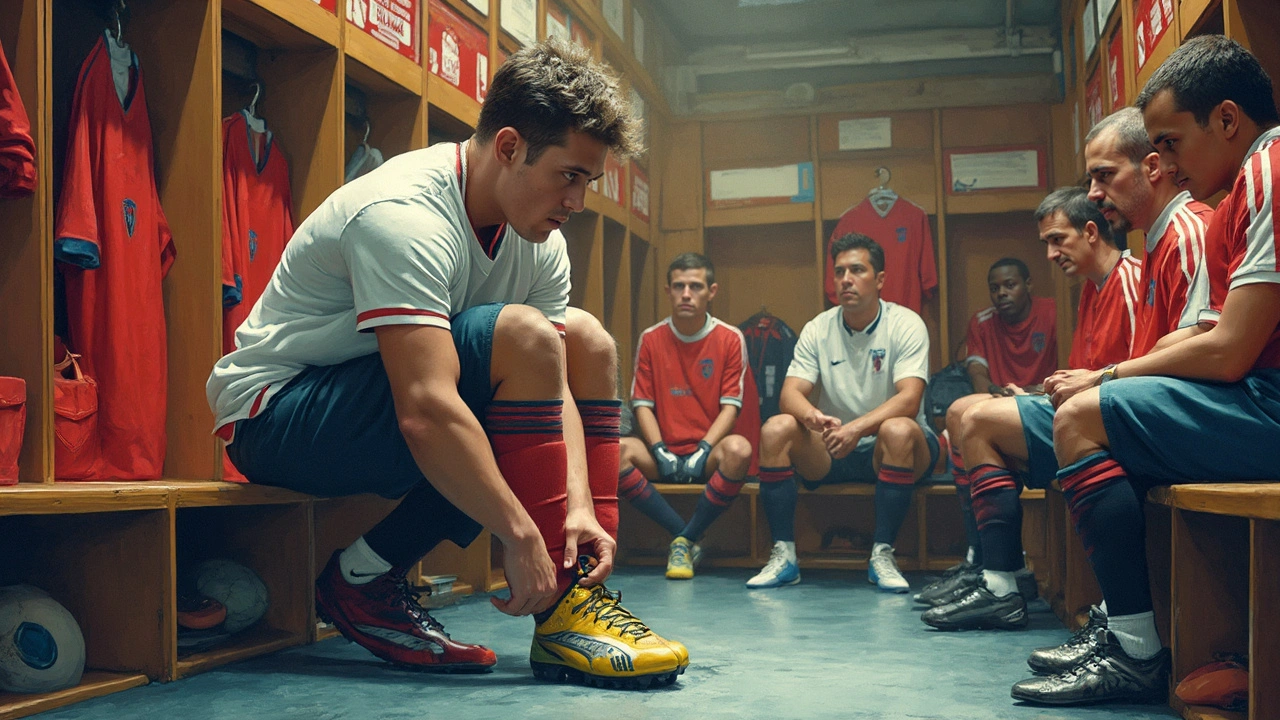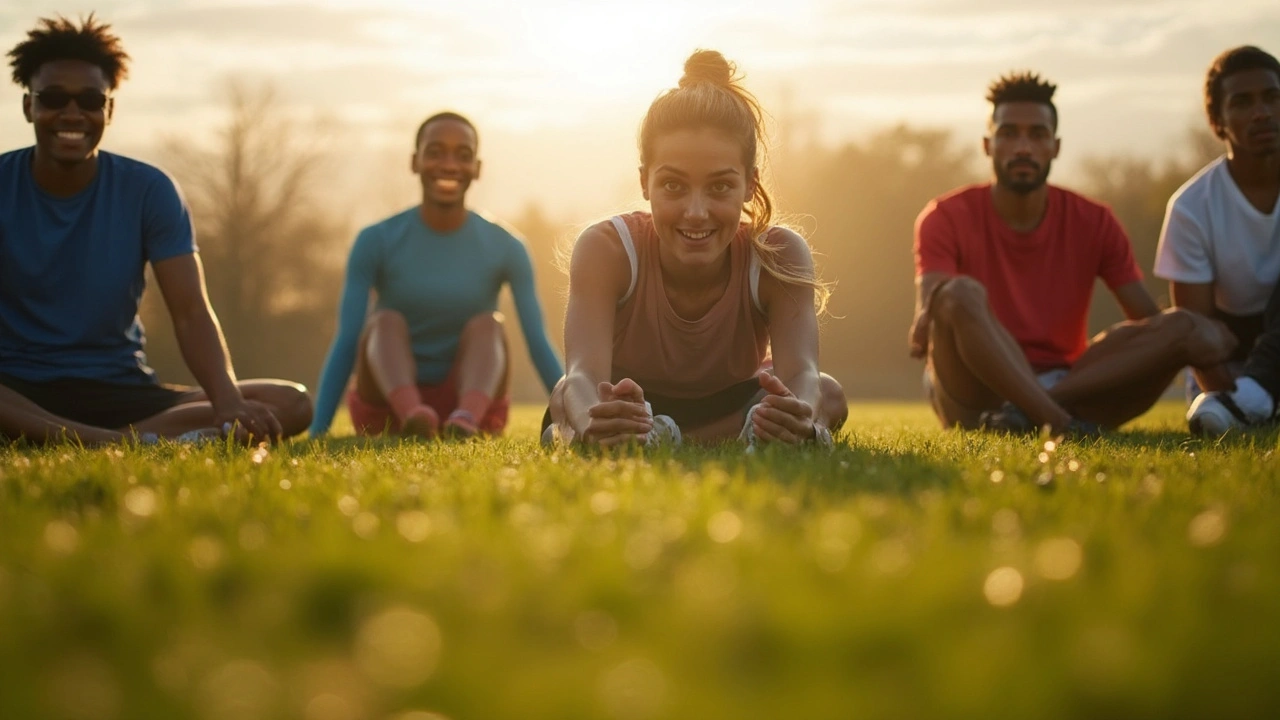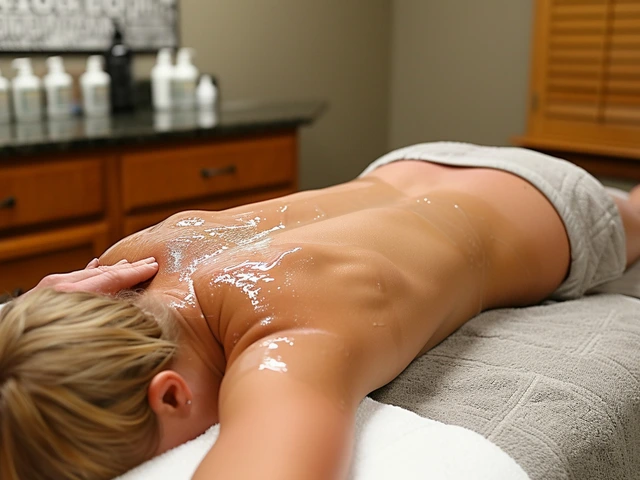Athletes are always looking for an edge, right? But here’s something you don’t hear about just from fancy supplements or high-tech gear—sports massage. Far from being just spa treatment, it’s a science-backed tool that’s changing how athletes train and recover. Think of it as a shortcut your muscles wish you’d tried sooner.
Right after a grueling workout, your muscles fill up with soreness and those famous knots. Sports massage gets right in there, working out tight spots and pushing blood where it's needed most. This isn’t just guesswork—researchers at Ohio State found that targeted massage right after intense exercise slashed muscle soreness by up to 30% compared to stretching alone. Less pain means you bounce back faster, ready to tackle your next session.
- What Makes Sports Massage Different?
- How It Supercharges Muscle Recovery
- Key Benefits for Athletic Performance
- Tips for Getting the Most from Sports Massage
- Common Misconceptions and Truths
What Makes Sports Massage Different?
Sports massage isn’t just your average relaxing rubdown. The whole point is to target muscle groups that take a beating during training or competition. Therapists tailor every session, switching up the pressure, technique, and focus areas based on what your body needs on any given day. It’s not a one-size-fits-all deal, and that’s exactly what makes it stand out.
Unlike Swedish massage, which is all about full-body relaxation, sports massage zones in on the muscles you push the hardest. Therapists use deep tissue techniques and quick movements to break down tight spots, boost blood flow, and help muscles flush out waste faster. Expect lots of stretching, kneading, and sometimes even a bit of discomfort—especially if you’ve got stubborn knots or overworked legs.
Want another reason why this matters? Sports massage isn’t just for pros. Regular folks training for a 10K or hitting the gym after work get just as much out of it. Physical therapists and trainers recommend it right before a big event for warm-up, and after workouts for speeding up recovery. They’ll often combine techniques like:
- Effleurage: smooth, gliding strokes that get the blood moving and warm up the tissue.
- Petrissage: deeper kneading to loosen those tough areas and improve flexibility.
- Trigger point therapy: pressing into specific muscle knots to release tension and improve function.
- Active and passive stretching: opening up the joints and lengthening muscle fibers.
The key difference comes down to purpose. Sports massage is engineered for performance—helping you train harder, play longer, and recover quicker.
How It Supercharges Muscle Recovery
Ever wonder why pros rarely seem wiped out for long after hard games or brutal training? It’s not just good genetics or top-tier trainers—sports massage plays a big part in the magic. Right after pushing your body, soreness kicks in, thanks to microscopic muscle tears and leftover waste like lactic acid. Here’s where sports massage seriously helps.
First, it boosts blood flow, which is a big deal. More blood racing through your muscles brings fresh oxygen and nutrients. This speeds up the patch-up process and clears out unwanted stuff that slows you down. A Stanford study tracked marathoners and found post-race massage cut their muscle recovery time by nearly half. That’s not hype—it’s real numbers.
Next, there’s less swelling and less inflammation. The hands-on pressure helps your body absorb excess fluid that builds up after tough sessions. This makes you feel less stiff and shaky the next day.
Sports massage also helps muscles relax in a way stretching usually can’t. When therapists dig into those stubborn knots, they loosen stuck muscle fibers, letting your body function smoothly again. Less tightness, fewer cramps, and more range of motion the next time you move.
If you’re after practical tips, try booking a session within 24 hours of a hard workout for the best results. Be sure to drink plenty of water right after—the increased circulation helps clear out toxins, but your body needs enough fluid to get the job done.
- Schedule massages regularly, not just when you’re already hurting.
- Combine with active recovery like light walking or swimming for even quicker bounce-back.
- Tell your therapist exactly where you feel tension—they can target those spots more directly.
Sports massage isn't about pampering—it's a real recovery tool that makes a difference you can feel.

Key Benefits for Athletic Performance
So why are athletes, from football players to weekend cyclists, lining up for sports massage? Turns out, the benefits aren’t just about feeling good for a day—they seriously change how your body performs and recovers over time.
The biggest win might be speedier muscle recovery. Getting a massage after hard exercise can cut down struggle time with sore, tight muscles. According to a 2023 study from the American Council on Exercise, people who got regular sports massages bounced back from muscle fatigue about 15% faster than those who relied on self-stretching or foam rolling.
There’s more. Sports massage isn’t just about squashing knots. It actually ramps up blood flow, which brings fresh oxygen and nutrients where your muscles need it most. That means less waste, less swelling, and fewer cramps. Ever had that annoying pain from scar tissue or a stubborn injury? Massage helps break that up so your muscles heal smoother and move more naturally.
- Sports massage is proven to improve flexibility, making it easier to reach and hold tough positions, especially in sports with lots of stretching or quick movements like soccer or tennis.
- Anxiety and mental stress can mess up your game. Massage helps control cortisol levels, letting you focus better and stay sharp under pressure.
- By lowering the chance of strains and sprains, massage is actually a big part of injury prevention for serious athletes who don’t want to get sidelined.
Don’t just take my word for it. Here’s a quick look at some actual data from published studies:
| Benefit | Study/Source | Result (%) |
|---|---|---|
| Reduced Muscle Soreness | Ohio State (2022) | 30% lower soreness |
| Faster Recovery | ACE (2023) | 15% faster than stretching |
| Flexibility Gain | Sports Med Journal (2021) | 12% improvement |
| Lower Injury Rate | UK Athletics Survey | 18% fewer injuries |
Each massage session adds up, helping you train harder and compete longer—without dragging around pain or risking time off for treatment. Not bad for something that feels pretty great, too.
Tips for Getting the Most from Sports Massage
It’s not just about showing up and lying down. To get real results from sports massage, you need a plan. The right approach makes every session count, whether you’re training for your first 10k or hitting the gym most days after work.
First, timing is everything. Most pros go for a massage 24–48 hours after tough training. This window seems to speed up muscle repair way more than a random appointment every few weeks. A study by the University of Illinois found that regular massage twice a week cut soreness time by nearly 25%.
- Speak up about sore spots: Always let your therapist know where you’re feeling tight or achy, so they can focus on what matters to you.
- Stay hydrated: Drink plenty of water after your session. It helps flush out waste products your muscles release during the massage.
- Move around afterwards: Gentle stretching or even a slow walk can stop muscles from stiffening up.
- Don’t expect magic in one visit: Consistency matters more than the length of a single session. Plan regular appointments based on your workout plan.
- Check your therapist’s credentials: Look for someone trained in sports massage, not just general massage. They’ll understand your needs better and use effective techniques.
Wondering how often you should book a session? Here’s what different levels of athletes usually do:
| Activity Level | Suggested Massage Frequency |
|---|---|
| Recreational athletes | Once every 2–4 weeks |
| Regular gym-goers | Every 2 weeks |
| Competitive/amateur athletes | Weekly or even before/after key events |
If money or time is tight, use massage guns or foam rollers between sessions. They won’t give you everything a pro can, but they really do help keep knots under control.
Want even more out of every session? Track how you feel in a notebook or app, and note what techniques work best for your body. That way, you and your therapist can zero in on what gets you results. Staying consistent and paying attention will turn massage from a treat into a real performance boost.

Common Misconceptions and Truths
There’s a lot of talk out there about sports massage, but not all of it matches what actually happens behind the treatment table. Let’s clear things up before you waste time—or worse, keep dealing with avoidable aches.
First up: it's not just for pro athletes or football players. Anyone who pushes their body, from new gym-goers to yoga regulars, gets real benefits. Massage therapists see tons of everyday runners, busy parents, even desk workers with tight shoulders. You don’t need a gold medal to see results.
Another myth is that a good sports massage should hurt a lot to be effective. Sure, some pressure is normal—that’s how muscles get worked—but if you grit your teeth through every minute, your therapist is probably overdoing it. Some studies have shown that deep pain actually raises stress hormones, slowing down recovery. A little discomfort is okay, but actual pain isn’t the goal here.
Many believe that one session magically fixes years of issues. Wishful thinking! Real change happens with consistency, and most athletes book regular sessions based on their training cycles. Check out this comparison of expectations versus reality:
| Misconception | Reality |
|---|---|
| It’s only for elite athletes | Anyone physically active can benefit |
| It must be painful to work | Effective massage isn’t supposed to hurt badly |
| One session solves everything | Ongoing sessions work best |
| Makes injuries disappear instantly | Helps recovery, but works with time and care |
Lastly, there’s confusion that sports massage can replace all other types of recovery—like stretching, rest, or good nutrition. That’s a no-go. Massage is just one tool. Use it in your toolkit alongside a good night’s sleep, enough fluids, solid workouts, and the right food.
If you’re thinking about trying sports massage, don’t let the myths put you off. Find a licensed therapist, be honest about your needs, and remember: recovery isn’t about looking tough, it’s about getting better, faster.






